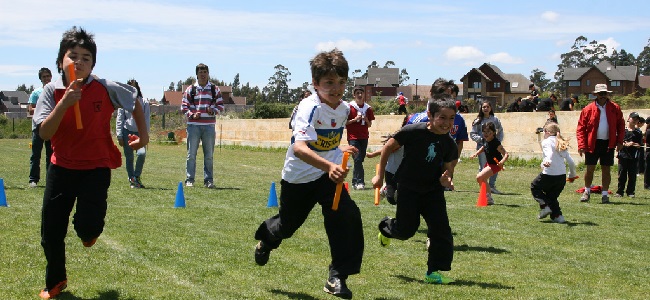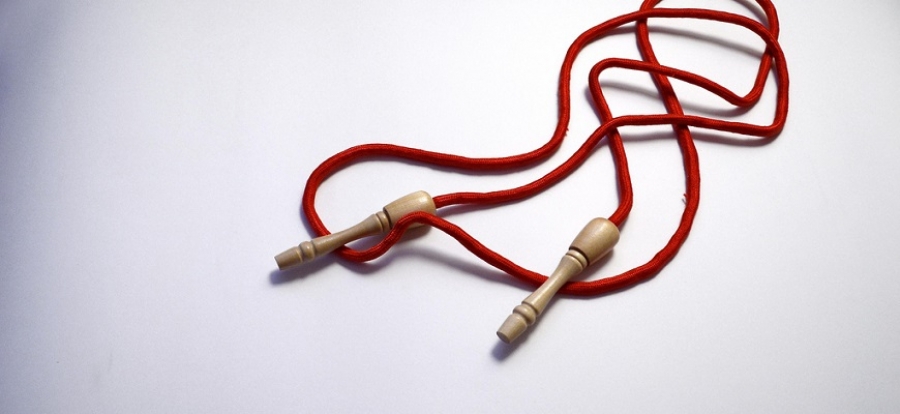When people ask where my sporting genes come from I’m never sure how to answer, because my mum tells me she hated PE at school and dad was famous for taking short-cuts in cross country and heading off for a cup of tea instead!
But when I think how much sport has given me, and the power it has to change the lives of young people, it makes me more determined than ever to find ways to engage students who have felt alienated by school sport.
I was determined to focus my energy on students who, for whatever reasons, felt uncomfortable about PE, by introducing projects designed to entice them into sport and raise their confidence and self-esteem at the same time.
Our programme was based around a lunchtime club in which students, normally chosen from the Learning Support Unit and who have found it difficult to settle into High School life, learn life skills and try out new sports.
A big tip is to give students a voice. We allowed them to decide themselves each week what sports or topics to concentrate on, and this noticeably increased engagement levels. But the most important foundation for all of us was having the energy and drive to keep thinking of new and original ways to tempt students in.
The key tactics I would recommend, and which worked well at Holy Family Carlton, are as follows.
Choose innovative sports
I found the key to engaging students who have shown no interest in PE or sport before is to create a level playing field by introducing an exciting new sport that nobody has tried before.
Mainstream sports such as football are great and have their place in PE, but many pupils arrive at secondary school already believing they aren’t good at it, or carrying a negative feeling about team sports.
Introducing the group to something different changes the dynamic completely. Suddenly, everyone is in the same boat – needing to learn the rules for the first time, trying out new skills. Everybody starts from scratch.
Slacklining is one of the sports we have had most success with. It’s a bit like tightrope walking, and engages students really quickly. It is fantastic for balance and coordination, creates a real buzz and a team spirit too as the students cheer each other on.
Wheelchair Basketball is another example of an unusual sport that entices non-sporty students to get involved. A local club loans us their wheelchairs once a year for a week and the game is a great leveller – nobody has ever done it before. The students come in at lunchtime to practice and they have progressed so much that some have recently done their Level One coaching badges.
Boccia – a Paralympic version of bowls – is another wonderfully inclusive sport that has played a big part in reaching historically non-sporty students at our school.
Consider non-competitive sports
Competitive sport has an important part in school life but it is also crucial to remember that many students are put off by competition and need to be engaged in different ways. When you look at the obesity problem in this country, it only underlines how vital it is to get as many young people involved in sporting activity as possible.
We try and choose sports which are fun and challenging rather than competitive; it is amazing how much difference that makes for students who have a negative feeling about traditional sports and an aversion to PE.
Outdoor education centres are invaluable when it comes to introducing students to new sports, and I would recommend them wholeheartedly.
We take our students for day trips to try out team building activities which build friendships and confidence. Rock climbing and kayaking are good examples – and although these are sports that cannot be offered in school, it should be possible to forge relationships with local clubs so students know where to go out of school to learn more. We are lucky enough to have an indoor ski slope close to us, too – so sledging has proved popular.
It is worth pointing out, too, that just because a sport is non-competitive doesn’t mean it cannot provide a personal challenge; encouraging students to ‘beat their own record’ creates an element of self-competition and provides experience in goal-setting.

Hold taster sessions
As I mentioned, I’m convinced there is a sport out there for everyone; so taster sessions are an excellent way of introducing a wide variety of sports over a long period of time.
Hosting an annual celebration of sport can provide an opportunity to reach large numbers of students quickly, too. We choose to host ours a week after National School Sport Week – mainly because it is so difficult to find the right people to come in during the week itself. It is a great opportunity to bring in the slackline and a portable rock climbing wall – and also to introduce something completely new each year. Combining it with a charity fancy-dress fun run encourages exercise in a fun and unpressurised environment.
Think outside the pitch
There are plenty of ways to get involved in sport, and to buy into healthy living principles, even if you are not necessarily a sporty person.Learning leadership and mentoring skills can bring a huge boost in self-confidence and self-worth; and helping students take coaching or refereeing qualifications is an interesting tool.
We recently saw six students who had previously shown no interest in PE and had never enjoyed sport successfully engaged by taking a qualification in officiating at boccia. They now umpire once a week while other students play in the team.
It just shows that sport has the power to reach out to everyone if you work hard enough to find a way.
How do you go about assigning sports activities? Let us know in the comments.


















